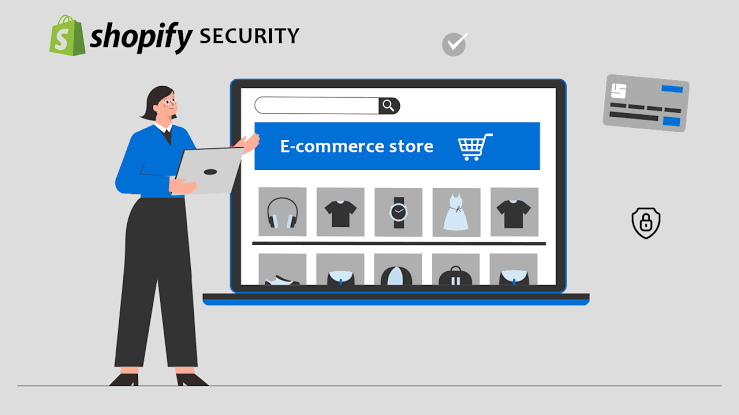In the fast changing world of online business safeguarding a store is not just a choice; its a necessity. Shopify a top platform offers merchants powerful tools to create and run their shops. Yet even the most secure platforms face risks. Regular security checks are crucial, for Shopify store owners to uncover weaknesses and take steps to thwart hacks. This article explores the significance of checks outlines vulnerabilities in Shopify stores and provides practical advice to bolster security.
Recognizing the Significance of Checks
Security assessments are thorough reviews of a stores security status. They assist merchants in pinpointing areas of vulnerability in their systems, procedures and practices that cybercriminals could exploit. For Shopify store proprietors routine evaluations are essential for reasons.
1. Safeguarding Customer Information: E-commerce platforms deal, with data such as personal information and payment details. A security breach can result in data theft putting customers at risk of fraud and identity theft. Routine check ups help ensure that measures are in place to protect data.
2. Upholding Trust and Reputation: Shoppers are becoming more mindful of their privacy and security online. An incident can undermine customer confidence and tarnish a brands image. By proactively addressing weaknesses merchants can build trust, with their customers.
3. Adhering to Regulations: Various countries enforce data protection laws, like the General Data Protection Regulation (GDPR) in Europe. Non compliance can lead to fines and legal repercussions. Regular security assessments help ensure adherence to these regulations.
Recognizing Vulnerabilities in Shopify Stores
To conduct a security assessment it's crucial to be aware of the vulnerabilities that can impact Shopify stores. These may include;
1. Weak Passwords: Store owners and their staff often use passwords that are easily guessable. It's important to have passwords that are complex, incorporating a mix of letters, numbers and special characters. Adding two factor authentication (2FA) can enhance security.
2. Third Party Apps: Merchants using Shopify can enhance functionality by installing third party apps. However if these apps aren't properly vetted they can pose risks. Store owners should carefully review the permissions and data access requested by apps before installation.
3. Outdated Themes and Plugins: Using themes and plugins can make a store vulnerable to attacks. Regularly updating themes and apps is crucial to ensure that any security updates released by developers are applied without delay.
4. Inadequate SSL Certificates: Secure Sockets Layer (SSL) certificates play a role, in encrypting data exchanged between customers and the store. It's essential to verify that an SSL certificate is active and properly configured to safeguard information.
5. Weak Network Protection: Security lapses can happen because of vulnerabilities in the network setup. Shopkeepers ought to utilize Wi Fi connections, set up firewalls and establish network segmentation to reduce potential threats.
Conducting a Comprehensive Security Audit
To effectively identify vulnerabilities store owners should perform a thorough security assessment. This process typically involves steps.
1. Asset Inventory. Start by compiling a list of assets such as the store itself, third party applications, payment processors and any integrated systems. This inventory will provide a clear picture of what needs safeguarding.
2. Vulnerability Scanning. Use tools to conduct scans on the Shopify store. These tools can help detect security issues like passwords, outdated software and misconfigured settings.
3. Code Evaluation. If the store utilizes code it's important to thoroughly examine the code for potential vulnerabilities. Consider involving a developer or security specialist to assess the code for issues, like SQL injection vulnerabilities or cross site scripting (XSS) weaknesses.
4. Permissions Assessment. Review the permissions granted to employees and third party applications. Ensure that staff members only have access to areas relevant to their roles and that applications do not have permissions.
5. Testing the Store's Security: Perform tests to mimic attacks and evaluate stores resilience. This process aids in spotting vulnerabilities that real hackers could take advantage of.
6. Reviewing Security Guidelines: Examine the stores policies and protocols to verify that they are current and in line with standards. This encompasses procedures for handling data, plans for responding to incidents and training programs for employees.
Implementing Security Improvements
After completing a security audit the next step is to implement improvements based on the findings. Here are strategies to enhance the security of your Shopify store.
1. Strong Password Policies Encourage practices by enforcing rules that require passwords and regular password changes. Adding authentication can greatly improve security.
2. Regular Software Updates Keep your Shopify platform, themes and apps updated with versions. This ensures that security fixes are applied, on time.
3. Limit Third Party Apps Carefully assess the necessity of third party apps and only install those from developers. Regularly check your installed apps and remove any that are no longer needed.
4. Data Encryption Make sure that SSL certificates are active and properly configured. Use encryption for customer data stored on the platform.
5. Employee Training Train employees about security practices such as identifying phishing attempts and protecting sensitive information. Ongoing training can significantly reduce the risk of errors leading to breaches.
6. Routine Assessments: Establish a routine for security assessments carrying them out on a quarterly or biannual basis. These evaluations play a role in ensuring that security protocols stay effective and adjust to emerging risks.
Conclusion
In todays digital age safeguarding a Shopify store is crucial. Regular security assessments help store owners spot weaknesses and take steps to thwart hacks. By being aware of vulnerabilities, performing thorough checks and making security upgrades Shopify merchants can shield customer information, build trust and strengthen their security stance. With cyber dangers looming prioritizing security is essential for a winning e commerce approach.
